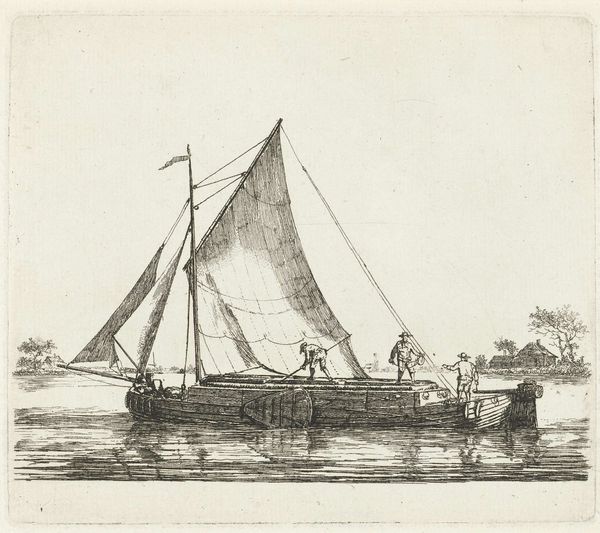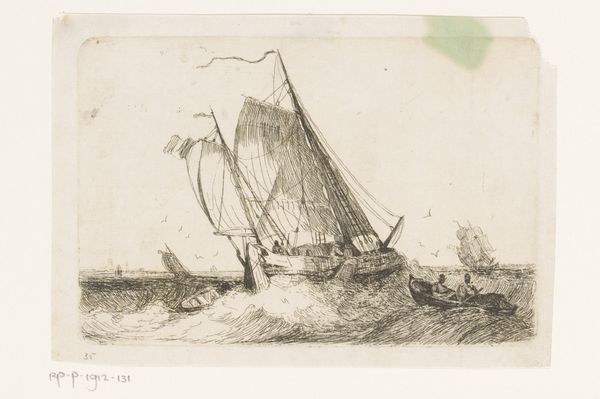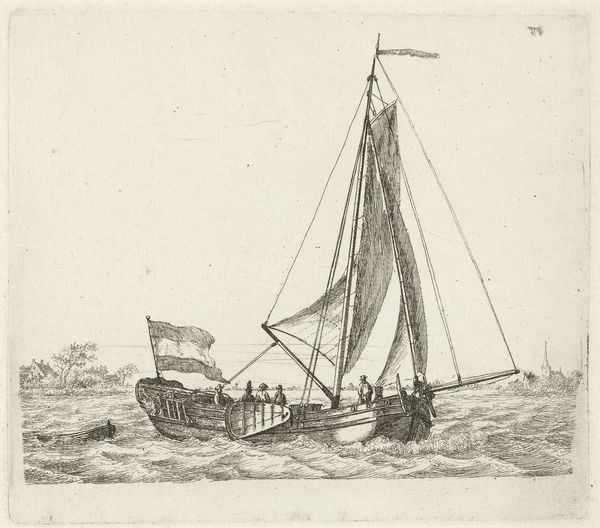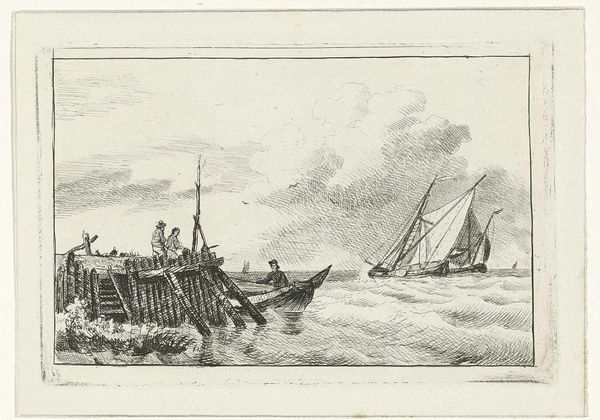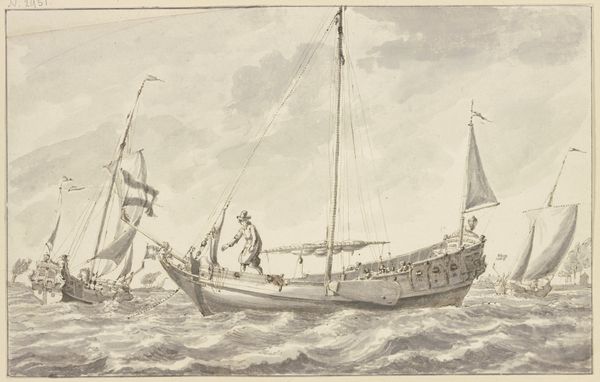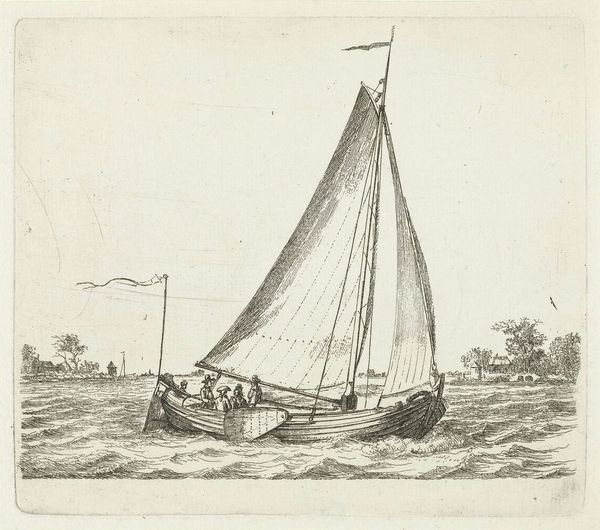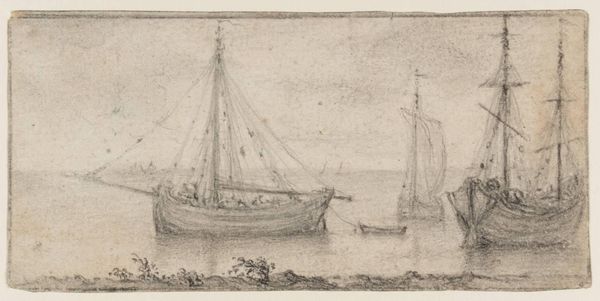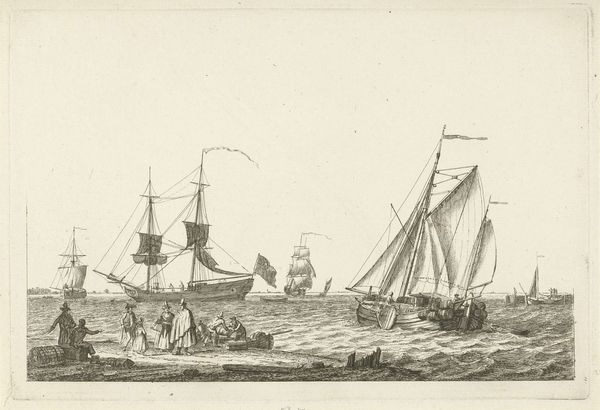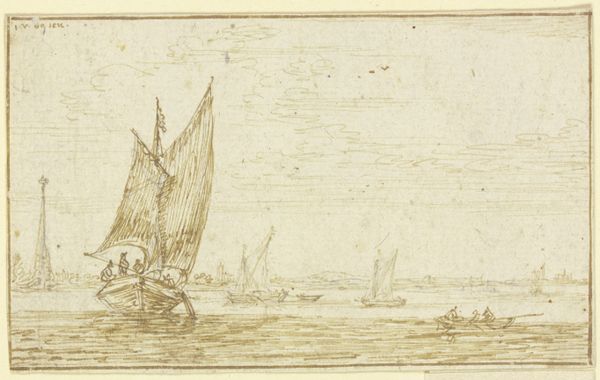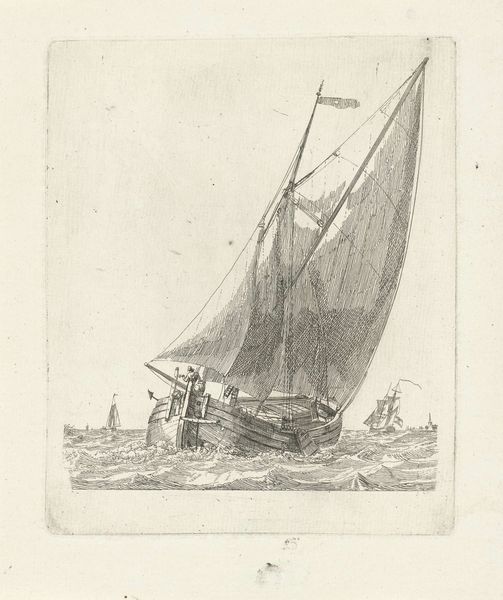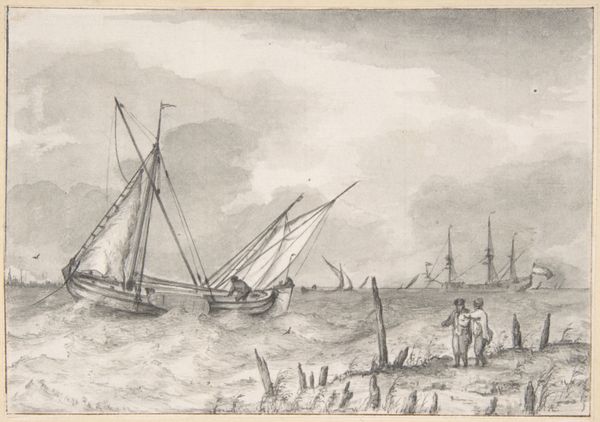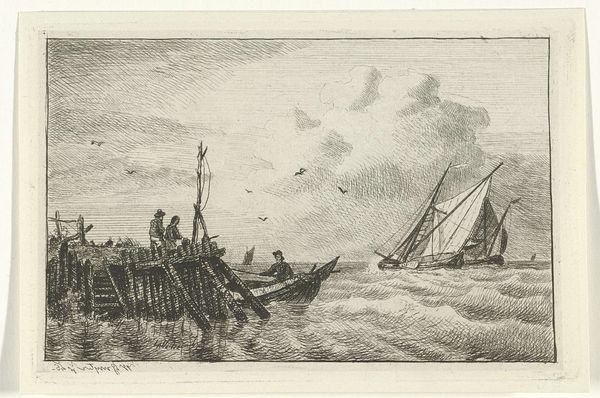
etching
#
dutch-golden-age
#
etching
#
old engraving style
#
landscape
#
figuration
Dimensions: height 134 mm, width 152 mm
Copyright: Rijks Museum: Open Domain
Curator: Here we have Gerrit Groenewegen's "Poon met negen figuren," an etching from 1791, currently held in the Rijksmuseum. I find its texture captivating. What’s your initial take on it? Editor: It looks...uncomfortable. The figures are crowded into a small vessel; it brings to mind a palpable sense of shared experience but with the hard reality of their labor against the natural world. Curator: I am compelled to consider who these figures are. Note the lack of specific features; it reads as almost allegorical of labor on the waterways. What were the social structures at play? We have to unpack the implicit class dynamics. Editor: Right. Etchings, though they seem delicate, were crucial to disseminating information in early industrial society. This boat—its construction, the sailcloth—everything was material reality for people. Laboring classes were absolutely at the mercy of their materials. How does their navigation point to broader systemic movements? Curator: Absolutely. We need to also interrogate what these figures were exporting or transporting. It makes me ponder how such maritime commerce shaped the social landscape of that period. Editor: Looking at it as labor being pushed back against weather: etching is an inherently reproductive medium; each pull from the plate gives forth the exact impression—how were the people who relied on shipping subjected to such demands as these waters themselves. How was labor being repeated? What physical realities impacted their ability to continue under environmental duress? Curator: This prompts me to view this not merely as a serene scene, but rather, as a statement—subtle or overt—regarding the intertwined fates of people with environmental and social change. It's more than just the depiction of a sailing scene, I suppose. Editor: Yes, in seeing Groenewegen's careful rendering, we are really considering how making—be it art or oceanic shipping—intersects with nature’s power. We begin to see all facets of society—from aesthetics to industry—connected to one another, materially, inextricably. Curator: This has opened my eyes to seeing it from multiple positions. Considering labor, the environmental concerns, it certainly layers in important themes about maritime transit during this epoch. Editor: For me, considering how such a small artwork embodies these enormous topics has enriched my awareness, I think, of their impact even to this very day.
Comments
No comments
Be the first to comment and join the conversation on the ultimate creative platform.
